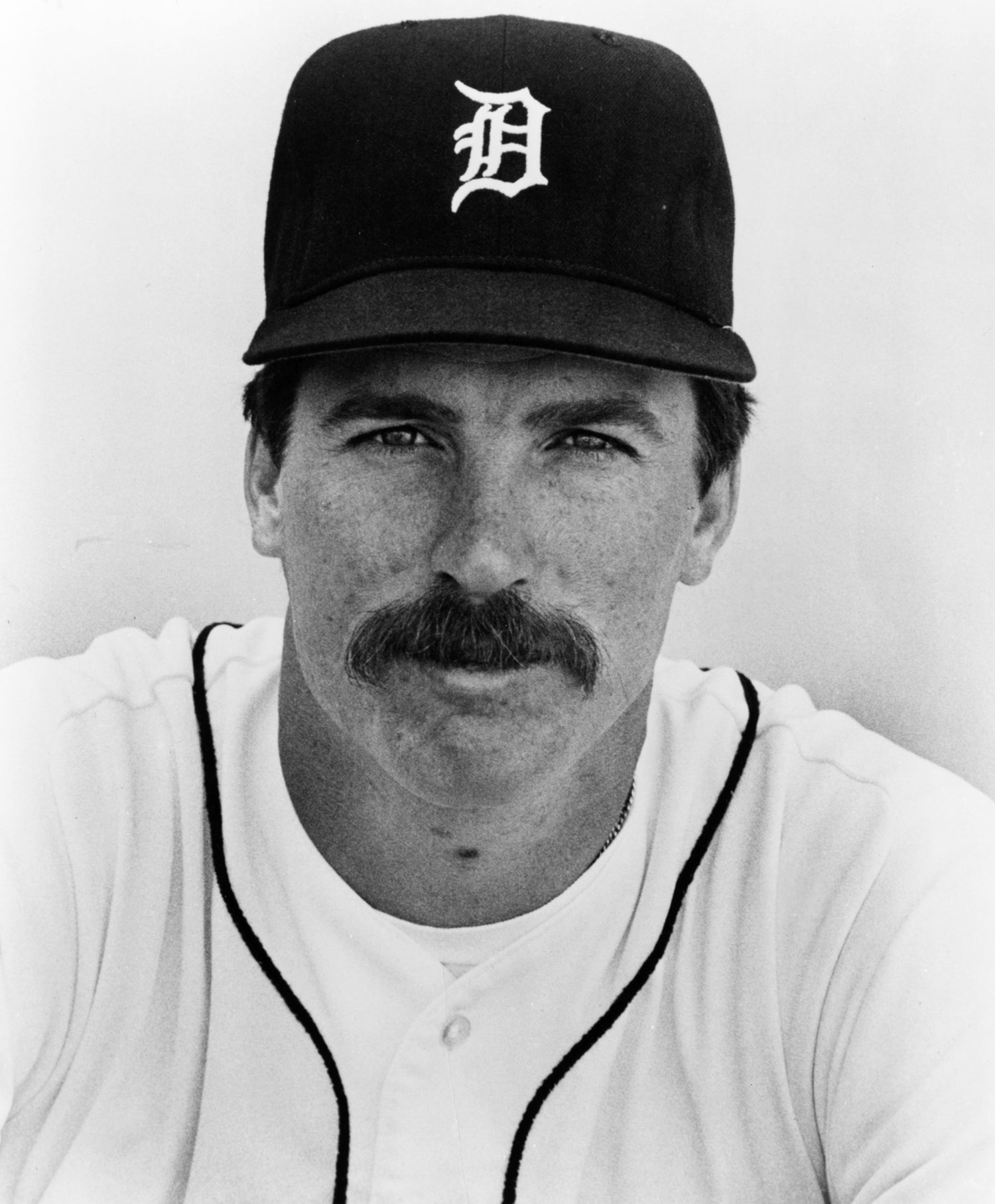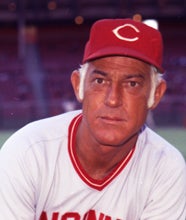- Home
- Our Stories
- The 1984 Tigers: Frontrunners from start to finish
The 1984 Tigers: Frontrunners from start to finish
Detroit’s superstars wasted no time setting the tone for the Tigers’ 1984 season. Over the first two games, both decisive victories over the Twins, shortstop Alan Trammell went 6-for-10, homered and scored four runs.
Then, on April 7, in the fourth game of the season, right-hander Jack Morris no-hit the White Sox. He threw 120 pitches and walked six batters in the 4-0 win, and he even loaded the bases in the fourth, but Chicago never managed a base hit, let alone a run.
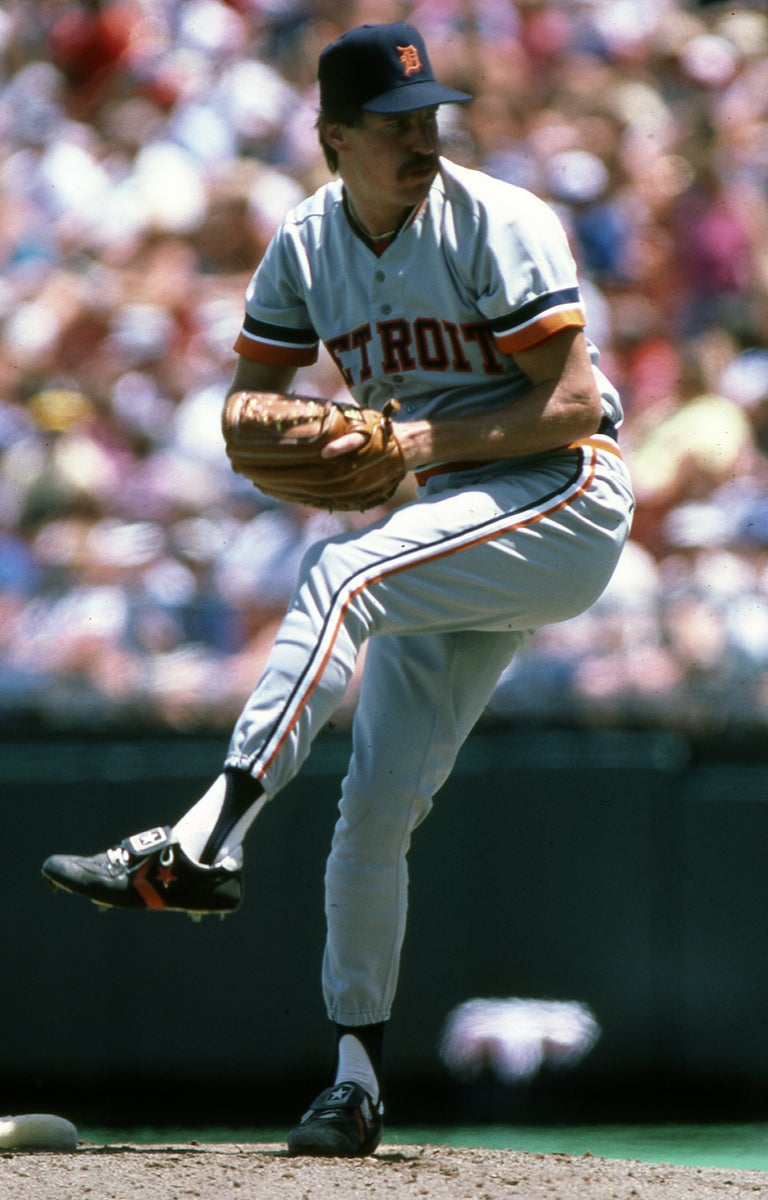
“I’m so excited, I can hardly talk,” Morris told the Detroit Free Press after hurling Detroit’s first no-no since Hall of Famer Jim Bunning in 1958. “I don’t recall if I’ve ever had a no-hitter after five innings.”
“I don’t think it has really sunk into him,” said catcher Lance Parrish. “He hides his emotions, but he’ll look back at this and know this is a great accomplishment. A tremendous accomplishment.”
At age 28, Morris was already an accomplished big leaguer. He led baseball with 14 wins in 1981, and two seasons later he paced the sport with 293.2 innings, finishing third in American League Cy Young Award voting both seasons. Morris threw a fastball and a slider, but his greatest weapon was a diving forkball which, after the no-hitter, White Sox catcher Carlton Fisk described as “devastating.”
“Jack is the type of pitcher who can pitch a no-hitter anytime,” said Tigers’ pitching coach Roger Craig. “Jack has the killer instinct.”
“It wasn’t a Picasso, but it might have been a Rockwell,” home plate umpire Durwood Merrill said of the performance.
For Morris, however, personal achievements had not yet translated to team success. In seven seasons since Morris’ 1977 debut, the Tigers hadn’t appeared in the postseason. They won 92 games in 1983 but still finished six games behind Baltimore.
They would break through in 1984, winning 104 games en route to a division title and a World Championship — the fourth in Detroit franchise history. Forty years have passed, yet few teams since have dominated a season from start to finish quite like those Tigers. Headlined by two future Hall of Famers in Trammell and Morris, and led by another in manager Sparky Anderson, Detroit enjoyed historic success to begin that memorable year.
Morris’ no-hitter was the fourth of nine consecutive season-opening victories. The Tigers lost game No. 10 to Bret Saberhagen and the Royals, but they rattled off another seven straight wins and took 25 of their next 29.

Detroit’s dominance reached historic levels at Anaheim Stadium on May 24, when they improved to 35-5. A 17th consecutive road win tied the 1916 Giants for baseball’s longest such streak and earned the Tigers a standing ovation from the opposing fans.
“The improbable, record-setting season of the Tigers continued to roll along unabated Thursday night as they beat the California Angels, 5-1, behind the four-hit pitching of Jack Morris,” wrote the Free Press.
Morris, with his only 10-strikeout showing of the season, improved to 9-1 and lowered his ERA to 1.97. Trammell sported a .340 average and .958 OPS. All was well for the Tigers, who held an imposing 8.5-game lead over Toronto in the American League East.
But a three-game losing streak followed in Seattle. Then a more pedestrian 18-12 record in June. Anderson, chronicling his club’s campaign in his book, “Bless You Boys: Diary of the Detroit Tigers’ 1984 Season”, acknowledged Detroit’s struggles after dropping six of eight to start July.
“We are staggering,” wrote the Cooperstown-bound skipper, already boasting two World Series rings from his 1970s run in Cincinnati, on July 8. “We’re playing sloppy all the way around… Since our 35-5 start we’re 22-22, and .500 ball just won’t cut it… Our guys don’t seem to realize the opportunity they have. They’ve got to kick themselves in the rear and play better than .500 ball.
“Now Lou Whitaker has a sore wrist and Alan Trammell had to leave the game after making a throw. We can’t lose those two for long.”
Trammell would miss only three weeks, but his arm never returned to full strength in 1984. Morris, too, endured some midseason struggles as he pitched to a 7.07 ERA in 10 starts from June 29 to Aug. 16.
But Anderson’s urgency must have resonated with his team. After the All-Star break, the Tigers finished July on a 14-6 run and boosted their division lead to 12 games. A 16-15 record in August barely dented their AL East advantage. And on Sept. 18, with a home win over the Brewers, Detroit clinched the division it had paced since Opening Day.
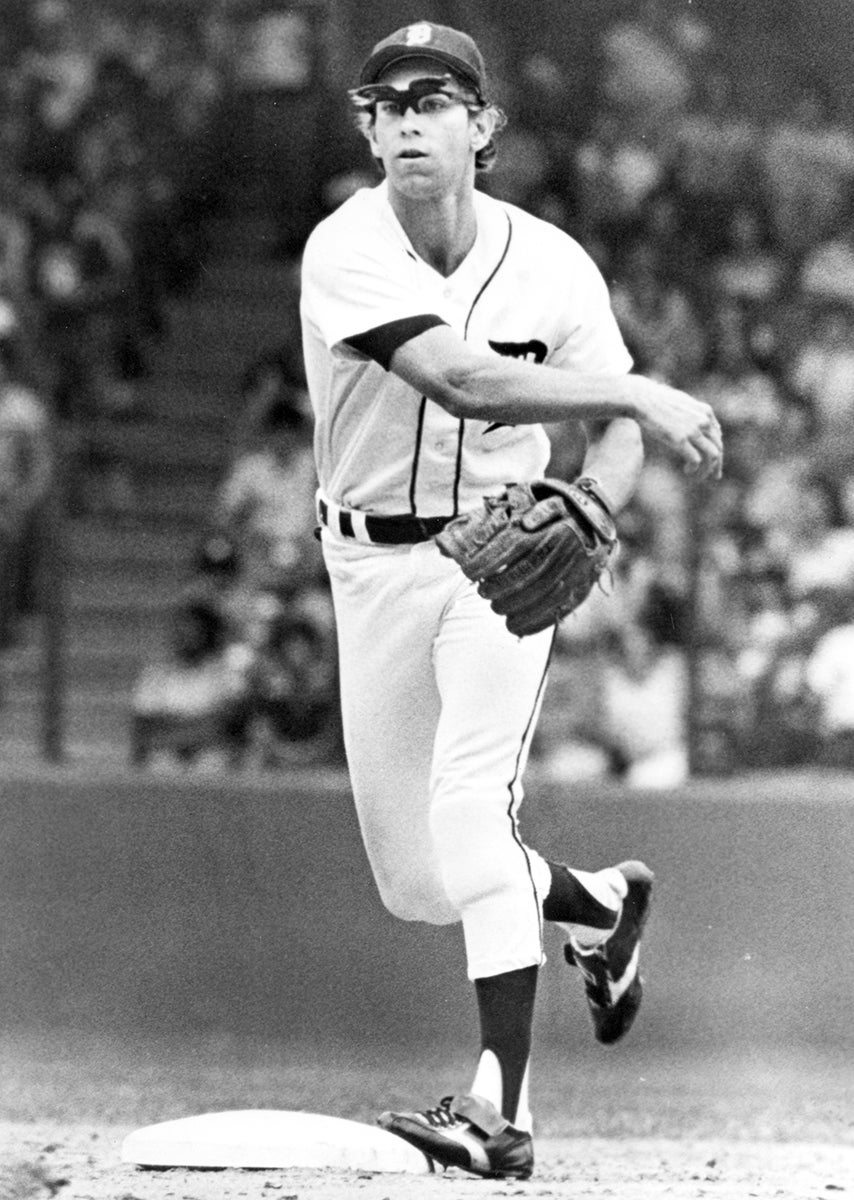
Trammell was at the center of the action that night, doubling twice and scoring a run in the 3-0 win. Randy O’Neal threw seven innings in his second career appearance, and shutdown left-hander Willie Hernández earned his 30th save.
“Tigers’ race was over in April,'' read the Free Press’ headline. “For the next few months, the rest of the division waited for the Tigers to go into the tank. But they didn’t. They wouldn’t… By the time the Tigers put down the Milwaukee Brewers, there wasn’t a baseball fan in the country that believed they weren’t going to win the division.”
It seems to be an annual occurrence nowadays: A team wins more than 100 games and coasts to a division title, only to struggle in October. But these Tigers weren’t fazed by the pressure of the postseason. They crushed the Royals 8-1 in Game 1 of the American League Championship Series. Morris allowed one run over seven innings while Trammell went 3-for-3 with a triple, a home run, two walks and three RBI. The statement victory on the road confirmed these were the same Tigers, led by the same stars, who had dominated the regular season.
“The most valuable player on the team, as far as I’m concerned,” Morris said of Trammell, who had hit .314 with 34 doubles in 139 regular season games. He would add a Gold Glove Award — his fourth — after the World Series. “You don’t know how good Tram really is until he’s out of the lineup for a while. When I’m pitching, I want him out there.”
“We’re just having one heck of a time getting him out,” Kansas City manager Dick Howser added.
A three-game sweep disposed of the Royals and sent Detroit to their first Fall Classic since 1968. The series opened in San Diego, and Trammell got it started with a first-inning RBI single in Game 1. Morris surrendered two runs in the first but held the Padres scoreless the rest of the way while dealing with overwhelming crowd noise.
“I was really sky high in the first inning tonight,” he said. “That’s why I had some problems. But after all, this was my first World Series. The crowd made me nervous. I’d be a liar if I said I wasn’t a little shaky. When I started putting more effort into it, then I started pitching better.”
Anderson nearly pulled his ace in the sixth inning. With Detroit leading 3-2, San Diego got a couple runners aboard to begin the frame. “If Jack puts on one more batter, he’s coming out of the game,” Anderson said. But Morris struck out three straight to escape trouble and tossed three more innings for a complete game victory.
Morris took the hill again for Game 4, looking to give his Tigers a commanding 3-1 series lead. The righty was quickly establishing himself as a big-game pitcher in his first postseason and furthered that notion with another nine-inning effort, once again holding the Padres to two runs.
Trammell, meanwhile, posted what the Free Press called a “Reggie Jackson-like” performance. In the first inning, he launched a two-run home run. In the third inning, he did it again. Trammell accounted for three of the Tigers’ seven hits and all four of their runs. It was his fourth-straight multi-hit World Series game.
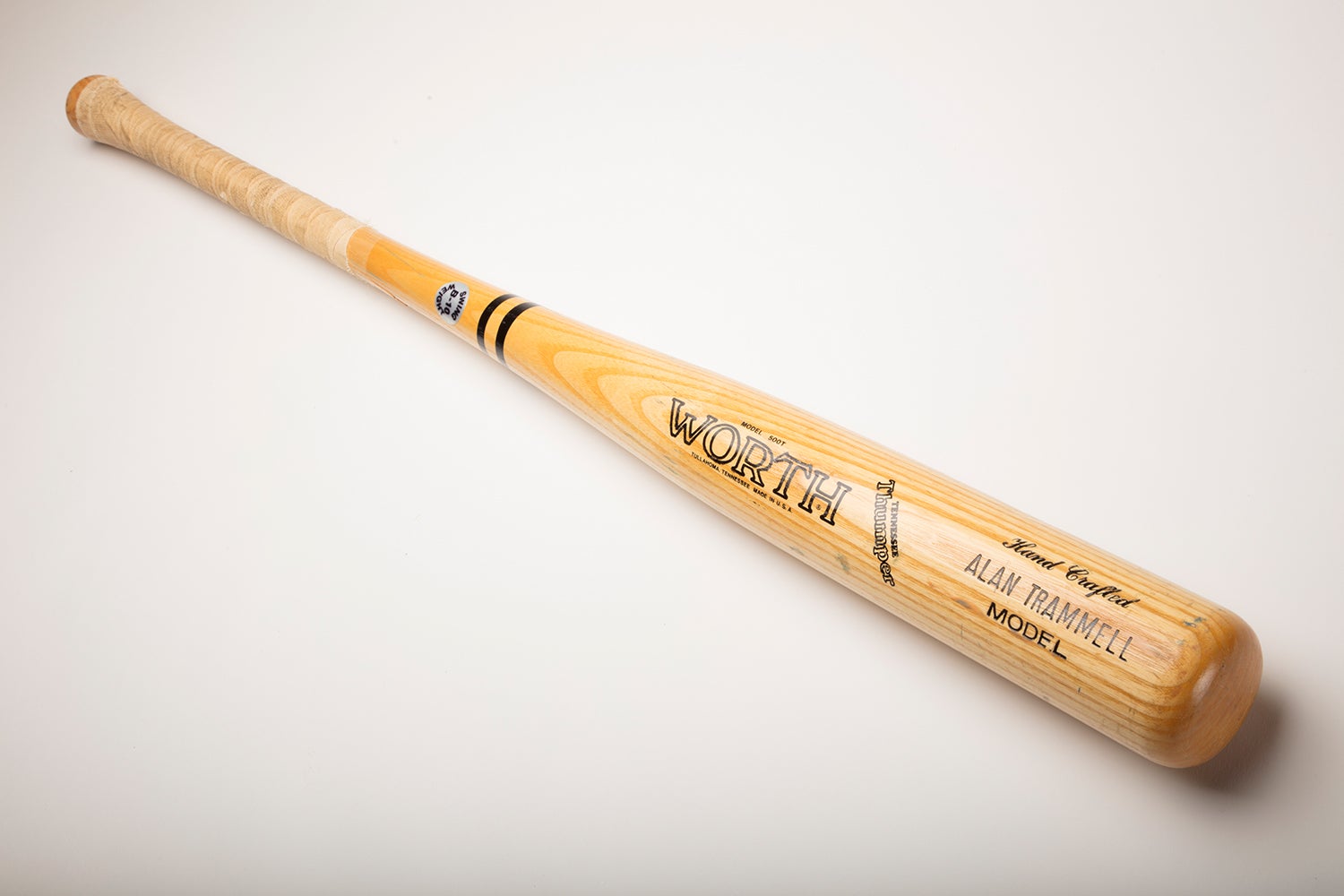
“Can you tell me why that man doesn’t get more recognition?” Anderson asked after the game. “He is the best shortstop in the game, but nobody outside of Detroit knows about it. He’s the best shortstop I’ve ever seen.”
“And who was in the Detroit clubhouse a half hour after the 4-2 victory, asking for Trammell’s bat?” wrote the Free Press. “A representative of the Hall of Fame. How’s that for national recognition, Sparky?”
That 34.5-inch Worth bat remains part of the Hall of Fame’s collection, representing one of the all-time great World Series performances. Trammell, named World Series MVP after the decisive Game 5, hit .450 in the series with two home runs and six RBI.
The Free Press described the Tigers as “the come-from-ahead ball club from the coming-from-behind town.”
Playing with the lead had characterized their entire 1984 season. In the standings, of course, Detroit’s 35-5 start allowed them to battle through a midseason skid without consequence. But the Tigers had been front runners within games, too, scoring in the first inning of 61 regular season games. This trend held true in October — Detroit tallied first-inning runs in six of eight postseason games.
Anderson managed another 11 seasons in Detroit before retiring and eventually being inducted to the Hall of Fame in 2000. Morris and Trammell played until 1994 and 1996, respectively, and received their bronze plaques together in 2018. Their storied careers, and especially the legendary 1984 championship run, live on in Cooperstown.
Justin Alpert was a digital content specialist at the National Baseball Hall of Fame and Museum


